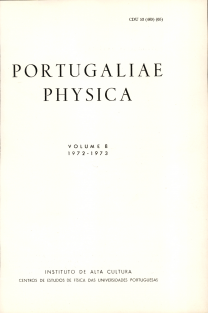
ABSTRACT — The hydrodynamic theory of nematic liquid crystals is revised and applied to the study of the nuclear magnetic relaxation in these materials. The expression found for the proton spin-lattice relaxation rate differs somewhat from those published earlier.
ABSTRACT — A foundation for the boundary layer equations of hydrodynamics is presented based on its mathematical structure. The connection between the physical arguments used for simplifying the Navier-Stokes-Poisson equations and the resulting partial differential equations is shown, allowing a clear definition of boundary layer flows.
RESUME — On discute le caractére invariant de l’entropie et on propose quwil ne Soit valable que dans les cas des «états correspondants» d’un systéme thermodynamique donné, dans des référentiels galiléens différents. Parmi les conséquences qui découlent de cette proposition on a déduit la loi, plus générale, de transformation relativiste de la chaleur:
ABSTRACT —he presently available theoretical and experimental values for the Ags coefficients of the X-ray angular correlation function are compared in order to discuss the calculated values for M2/E1 mixing ratios. The experimental values were obtained from previous angular correlation experiments and calculated from previous fluorescence yields determinations.
RESUME — Nous analysons de fagon semi-classique la diffusion élastique dions lourds. Nous montrons que la section efficace différentielle peut étre décrite en termes de diffusion «arc en ciel». Nous donnons aussi un moyen direct d’extraire des résultats experimentaux une valeur approchée du moment angulaire de forte absorption.
SUMMARY —In an introduction Liouville’s theorem is elucidated. In Part I the validity of Liouville’s theorem is shown in four examples: field free space, uniform electric field, electrostatic lens and uniform magnetic field. The theory is applied on a mass spectrometer and the definition is given of «emittance».

